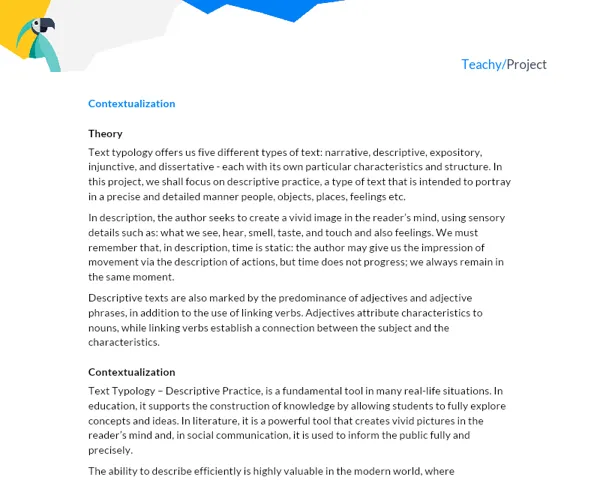Contextualization
We live in an era where science and technology are present in virtually every aspect of our daily lives. Therefore, it is essential that we can understand and interpret the scientific advances and discoveries that are daily disclosed. In this context, scientific dissemination texts play a fundamental role, as they are responsible for transforming highly specialized knowledge into accessible information for the general public.
Scientific dissemination texts serve as a bridge between the scientific community and society, making it possible and accessible to understand the natural, technological, social, and cultural phenomena that surround us. This type of text has its own characteristics, as it needs to be clear, objective, and, at the same time, attractive to capture the reader's attention.
Importance of the Theme
Understanding scientific dissemination texts allows citizens to interact more effectively with the information they receive, questioning, for example, the veracity of a news story or the effectiveness of a new medication. Furthermore, by developing the ability to interpret this type of text, individuals will be developing skills for critical and analytical reading of different types of texts.
Moreover, the ability to understand and analyze scientific dissemination texts is also essential in an educational context. Many of the concepts and ideas addressed in the classroom come from recent studies and research, and therefore, the ability to understand these texts allows students to stay updated and to comprehend and apply the learned contents.
Practical Activity
Activity Title: Science for Everyone
Project Objective
This activity aims to develop students' skills regarding the reading, analysis, and production of scientific dissemination texts. Additionally, it seeks to promote teamwork, creativity, research, argumentation, and students' oral skills.
Detailed Project Description
Students will be divided into groups of 3 to 5 members. Each group must choose a scientific topic of interest, which can be related to Biology, Physics, Chemistry, Mathematics, Technology, among others.
Next, each team should research and study the chosen topic, consult scientific dissemination texts related to the topic, and search for original scientific articles to better understand the subject.
After the research, the groups should produce a scientific dissemination text on the chosen topic. The text should be written in a language accessible to the general public, but without losing scientific accuracy and correctness.
In addition to the text, the groups should prepare an oral presentation for the class on the chosen topic, using visual aids (slides, videos, images).
Required Materials
- Computers with internet access
- Scientific dissemination articles and texts
- Text editing program (Google Docs, Word)
- Presentation software (PowerPoint, Google Slides)
Activity Step-by-Step
- Group formation and topic selection
- Research on the topic in scientific dissemination articles and texts
- Study and analysis of scientific dissemination texts related to the chosen topic
- Writing the scientific dissemination text
- Preparation of the oral presentation
- Presentation to the class
Project Deliverables
The deliverables of this project include:
- The produced scientific dissemination text
- The oral presentation
- A written report with: Introduction (contextualization of the theme, relevance, and project objective), Development (theory, activity details, methodology, and results), Conclusions (learning outcomes and conclusions about the project), and Bibliography.
The report should be coherent and complement the work done in the practical part, presenting in depth and clarity the research conducted, the writing process of the scientific dissemination text, and the preparation of the presentation.
Furthermore, the report should provide a reflection on the objective and importance of scientific dissemination texts, as well as on the teamwork process.



